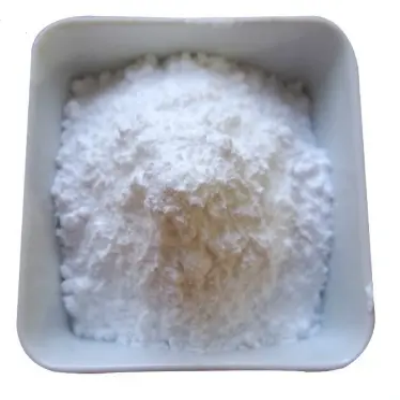2,4-DINITROPHENYLHYDRAZINE HYDROCHLORIDE CAS:55907-61-4
2,4-Dinitrophenylhydrazine hydrochloride has numerous applications primarily in analytical chemistry, but it also finds uses in other fields such as pharmaceuticals and environmental analysis. One of the primary applications of DNPH is in the detection and quantification of carbonyl compounds, including aldehydes and ketones. When DNPH reacts with these compounds, it forms a distinct, stable dinitrophenylhydrazone derivative that can be isolated and characterized. This reactivity allows researchers to utilize DNPH in various analytical techniques, such as High-Performance Liquid Chromatography (HPLC) and spectrophotometry, enhancing the sensitivity and specificity of carbonyl compound detection in complex mixtures. In the pharmaceutical industry, 2,4-Dinitrophenylhydrazine hydrochloride is employed in drug development to study the reactivity of potential drug candidates. It helps in assessing the stability and reactivity of carbonyl-containing drugs, contributing to the understanding of their metabolism and potential side effects. Moreover, it can be used in the synthesis of hydrazone derivatives that may exhibit biological activity, thereby providing leads for new therapeutic agents. Environmental analysis is another critical area where DNPH is applied. It serves as a reagent for the determination of formaldehyde and other carbonyl pollutants in air and water samples. The ability to detect low concentrations of these volatile organic compounds (VOCs) is essential for monitoring environmental health and ensuring compliance with regulatory standards. Furthermore, DNPH is valuable in educational laboratories for teaching organic reaction mechanisms and functional group identification due to its clear visual results and ease of use. In this context, students learn about nucleophilic addition reactions and the importance of hydrazones in organic synthesis. Despite its usefulness, it is important to handle 2,4-Dinitrophenylhydrazine hydrochloride with care due to its hazardous nature. Proper safety protocols should be followed to minimize exposure risks. Overall, DNPH remains an indispensable tool in both research and industrial applications due to its versatility and effectiveness in carbonyl compound analysis.






| Composition | C6H7ClN4O4 |
| Assay | 99% |
| Appearance | white powder |
| CAS No. | 55907-61-4 |
| Packing | Small and bulk |
| Shelf Life | 2 years |
| Storage | Store in cool and dry area |
| Certification | ISO. |









